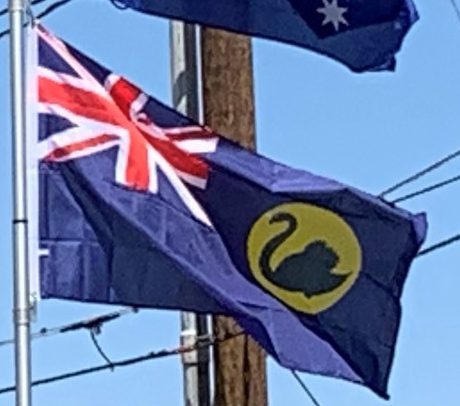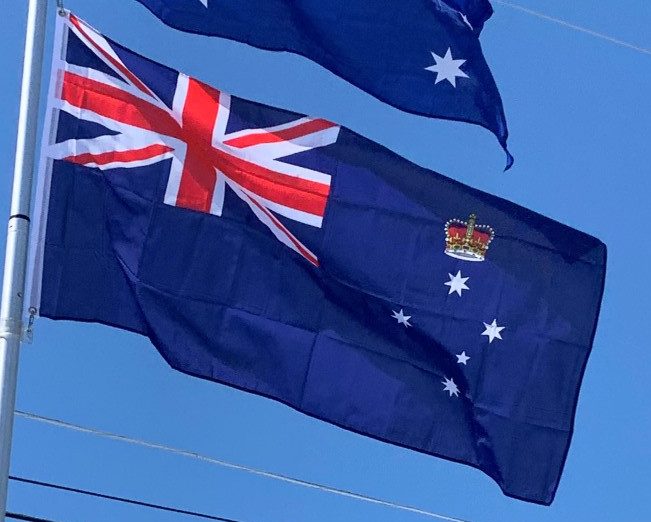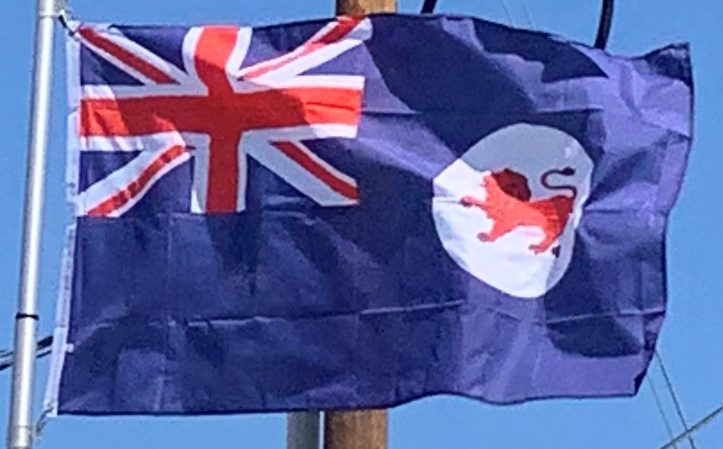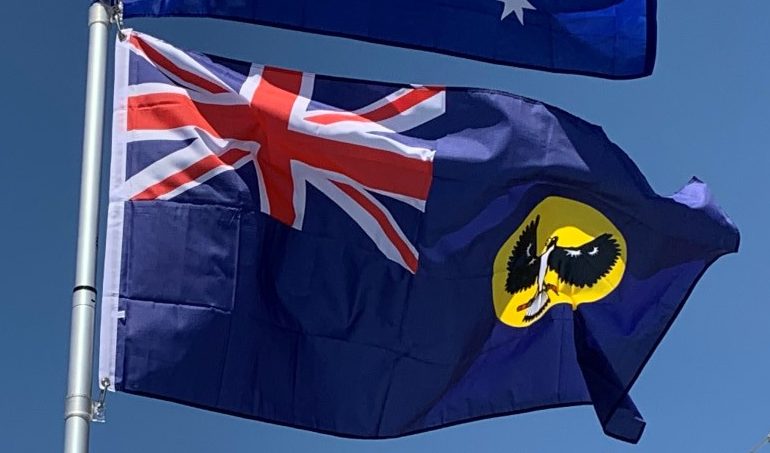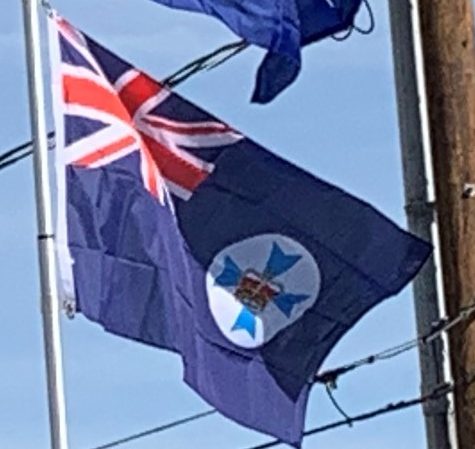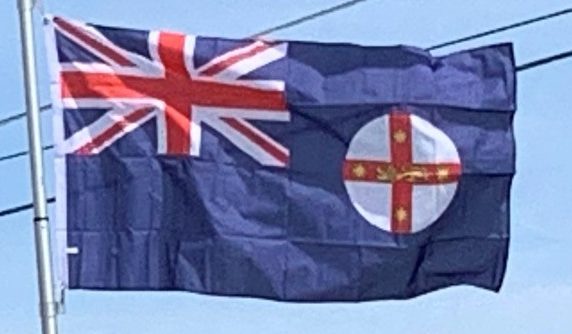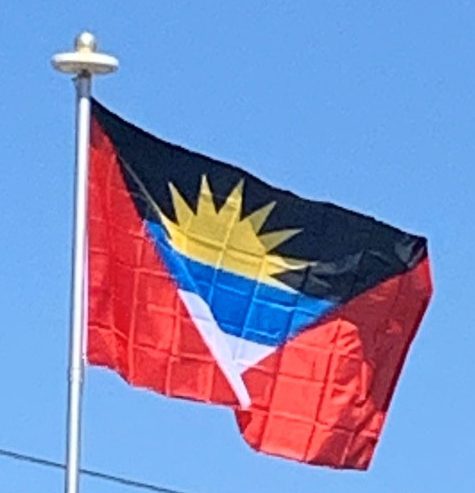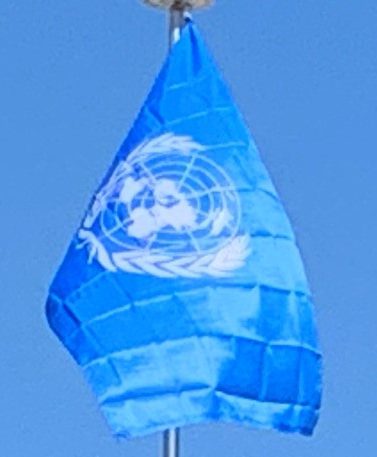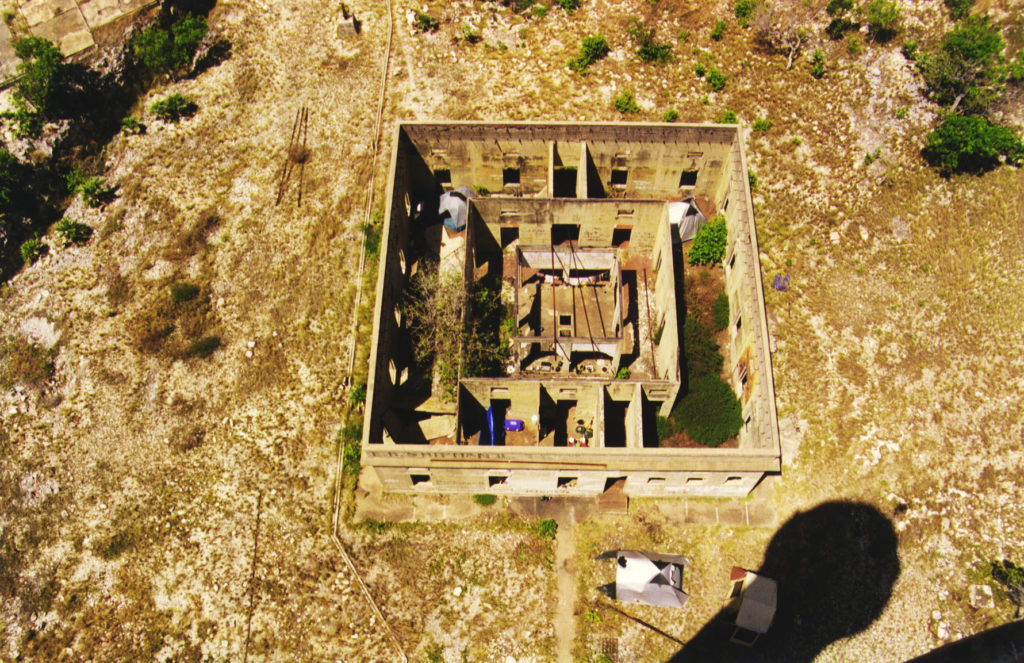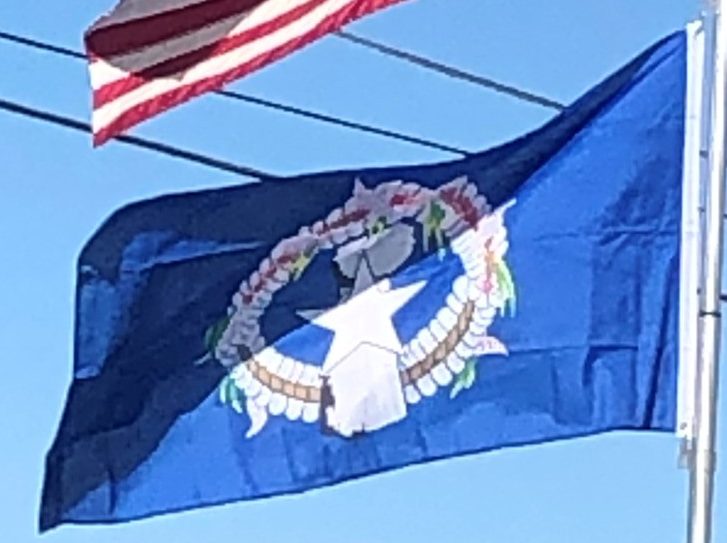Western Australia
The current state flag of Western Australia was officially adopted by the government of Western Australia in 1953.
The flag is based on the defaced British Blue Ensign with the state badge located in the fly. The badge is a gold disc with a native black swan, the swan is facing towards the hoist. The black swan has long been a symbol of Western Australia. The original colony was called the Swan River Colony at the location which is now Perth.
The first flag of Western Australia was adopted in 1870 and is almost identical to the current flag of Western Australia. The only difference is that the swan was facing the opposite direction towards the fly rather than towards the hoist. The direction of the swan was changed to conform to the vexillological guideline that animals on flags must face the hoist, so when carried on a pole, the animal faces the same direction of the bearer.
